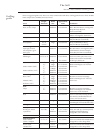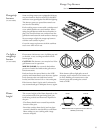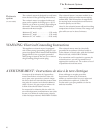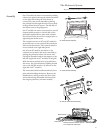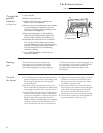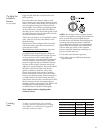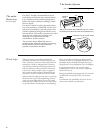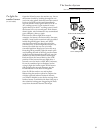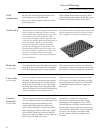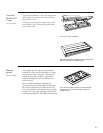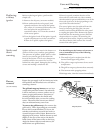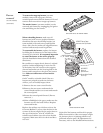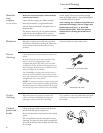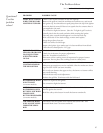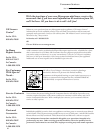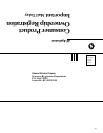Special offers from our partners!

Find Replacement BBQ Parts for 20,308 Models. Repair your BBQ today.
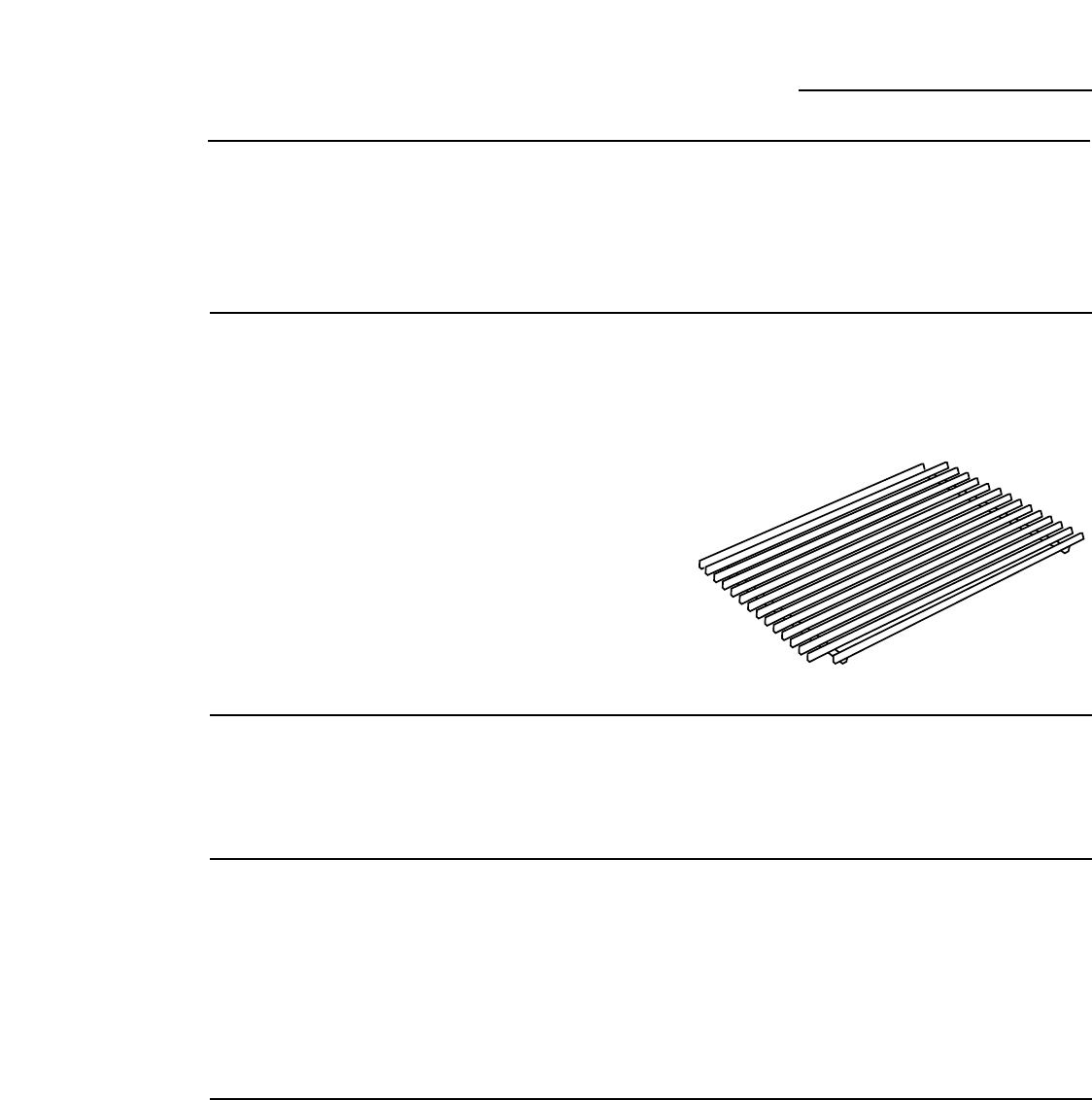
22
The easiest way to clean the grill is immediately
after cooking is completed and after turning
off the flame. Wear a barbeque mitt to protect
your hand from the heat and steam. Dip a
brass bristle barbeque brush in tap water and
scrub the hot grill. Drip the brush frequently in
the bowl of water. Steam, created as water
contacts the hot grill, assists the cleaning
process by softening any food particles. The
food particles will fall onto the hot lava rocks
or ceramic briquettes and burn or fall into the
drip tray (on some models). If the grill is
allowed to cool before cleaning, cleaning will
be more difficult.
For harder baked-on food particles, remove the
grill rack and soak for about one hour in warm
water. Lightly scrub with a Scotch Brite® pad.
Grill rack(s)
Drip trays
(on some models)
The full width drip trays will collect grease from
the grill section, as well as boilovers and spills
from the range-top burners (on some models).
Allow the pan and its contents to cool before
attempting to clean. Clean the grease from the
pan often to avoid the possibility of a grease fire.
Lava rocks
(on some models)
It is not necessary to remove the lava rocks for
cleaning. They burn themselves clean during
the next cooking operation. Periodically the
rocks need to be turned over for a thorough
cleaning. How often you use the grill and the
amount and type of food cooked will determine
when it is necessary to turn the lava rocks.
If grease can be seen on the top of the rocks,
or if you get a lot of flare-ups during cooking,
the rocks need to be turned over and heated
on HIGH for about 30 minutes, longer for
heavy soil.
Ceramic
briquettes
(on some models)
The layer of ceramic briquettes, under the grill
rack(s), will last for many years with proper care.
Burned-on food particles and ash can be
emptied off the stainless steel radiant trays
when cool by shaking over a waste receptacle.
After emptying the ash from the trays, replace
them with the small tray in the back and the
large tray in the front. Make sure the briquettes
do not cover the holes in the tray.
Chipping or cracking of the briquettes
may occur as they may get brittle with age,
depending on the frequency of use. This is
normal and does not affect the performance.
Do not replace the stainless steel radiant trays
with alternates. Should the ceramic briquettes
ever need to be replaced, purchase them
locally, wherever outdoor cooking centers
are sold.
Care and Cleaning
Stainless Steel Outdoor Cooking Center
Grill
components
Do not clean any of the grill components in a
self-cleaning oven or in a dishwasher.
Do not use a steel wool pad to clean any of the
grill components.
Grill components should be cleaned by hand
using warm sudsy water and a Scotch Brite® pad.
A brass bristle grill brush may also be used.



